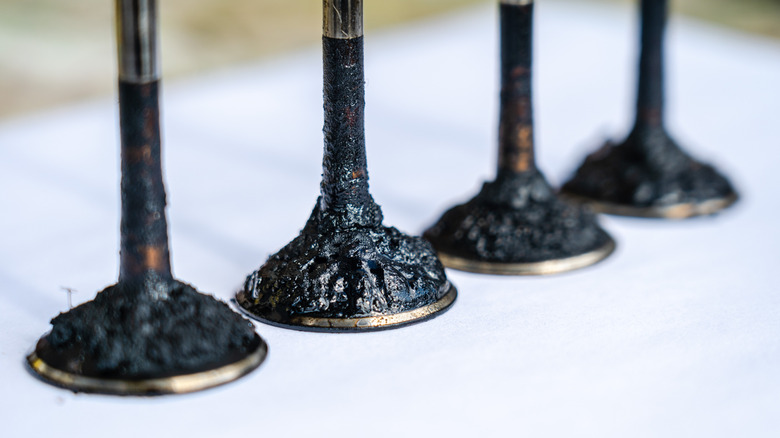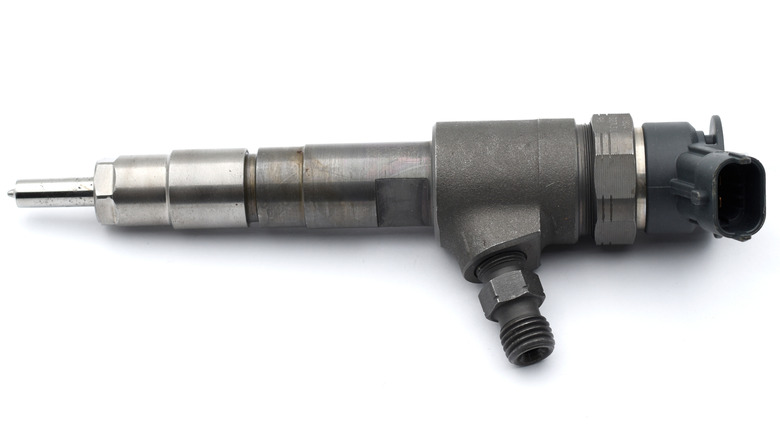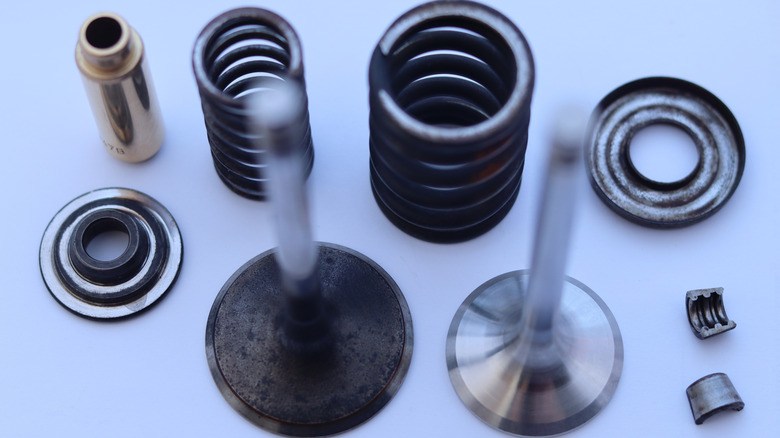Automakers have long touted the benefits of fuel injection, claiming increased efficiency and power. But as more cars have the system installed (around 73% in 2023), more and more consumers are dealing with a problematic and relatively common side effect of the system after as little as 20,000 miles on the road: carbon buildup on the engine’s intake valves.
After undergoing the trials and tests of racing, mainly by Mercedes in the 1950s, the system’s ability to improve power output was well established, and it was only a matter of time before it was widely adopted on road cars. In the early days, most injection systems placed the injector above the intake valve, letting the fuel/air mixture spray over that valve and then drop into the combustion chamber once that valve opened, more commonly known as port injection for the way the vapor was sprayed into the intake port. This solution is cheaper, simpler, and allows the fuel some extra time to vaporize and mix with the air to maximize combustion at the critical moment.
Injecting fuel directly into the combustion chamber, however, lets the engine use a higher compression ratio without fear of early detonation as the fuel actually acts to cool the chamber. That can lead to a serious increase in power, with one test finding a 65-horsepower difference between port and direct injection.
Drawbacks of direct injection
It wasn’t until 2004 that direct injection made its way onto a mass-produced gasoline car (diesels have always had direct injection) with the Audi A6. And while that car did enjoy the benefits promised by direct injection, carbon buildup is now among the most common problems faced by those engines. Carbon deposits are a result of incomplete combustion, a reality of any fuel-burning engine. A cleaner-burning engine using quality gasoline can help mitigate the problem, but the accumulation is inevitable.
Port injection systems can alleviate these issues as the gasoline mixture washes the intake valve while it flows from the intake port to the combustion chambers, but direct systems skip this step and thus have no self-cleaning system. But there are plenty of products, and even some decisions automakers can make, to mitigate these problems.
Some auto manufacturers have decided to use both port and direct injection on each cylinder. Toyota has a system that uses both port injectors and direct injectors when less power is required from the engine, while the direct injectors completely take over as the engine is asked to produce more power.
So what can you do?
There are a few things a driver can do to mitigate or even clean the carbon that may have built up over the life of the engine. To prevent problems, some recommend oil catch cans to capture any unburned oil or gas that got past the rings so that the carbon-rich mixture is not allowed to settle on the valves. You also can try to avoid those short runs to the grocery store, which can also exacerbate carbon buildup as the engine deliberately runs fuel-rich to warm up, and all of that extra fuel is unlikely to be burned off in combustion.
A more entertaining solution might be to use your engine for its full rev range. The excess heat from running to redline can help to break up the deposits.
There are also plenty of fuel additives whose purpose is to help avoid these buildups or break up ones that have already formed. The injectors on a direct-injection system are susceptible as well, especially for cars that are mostly used for short trips. And, of course, in the worst cases the engine can be disassembled and individual parts given direct treatment, but this is not necessary in the vast majority of cases.




